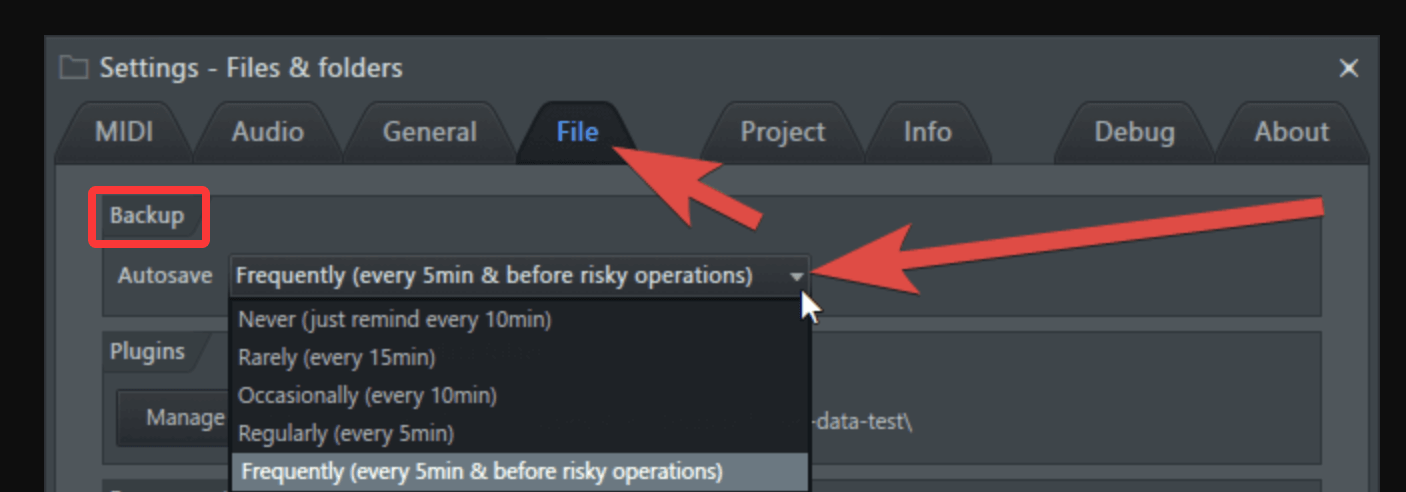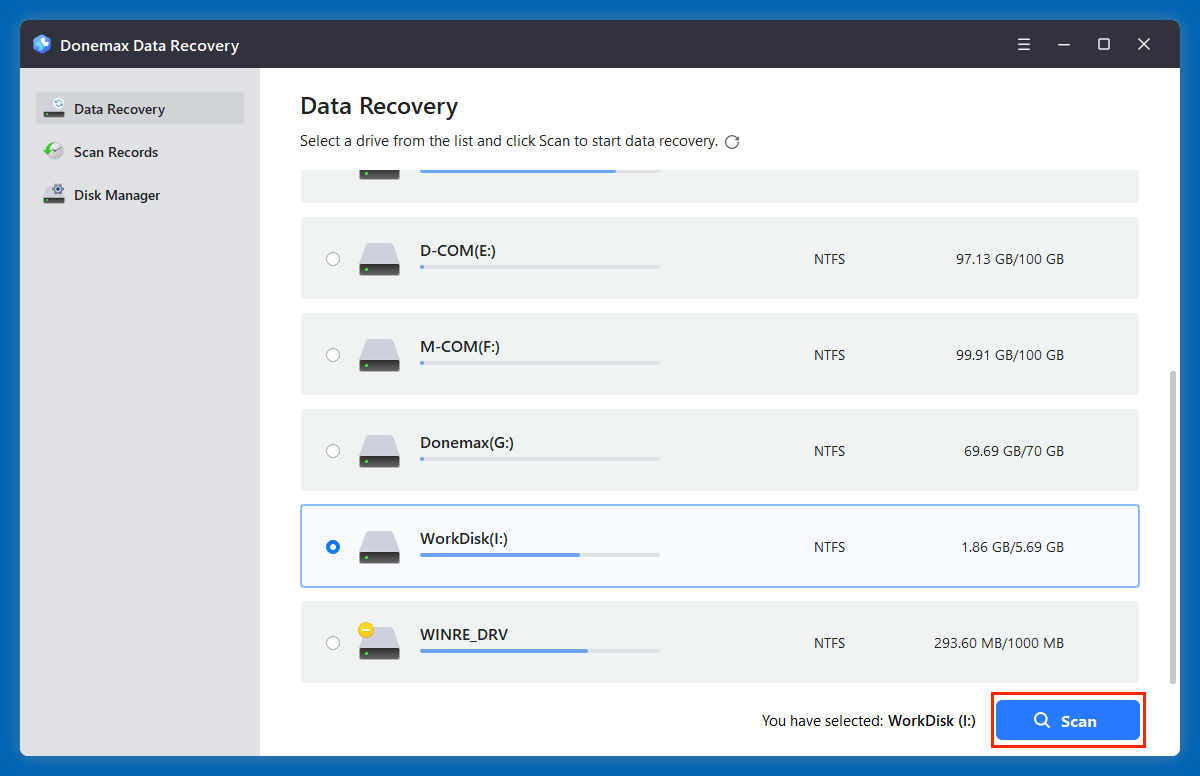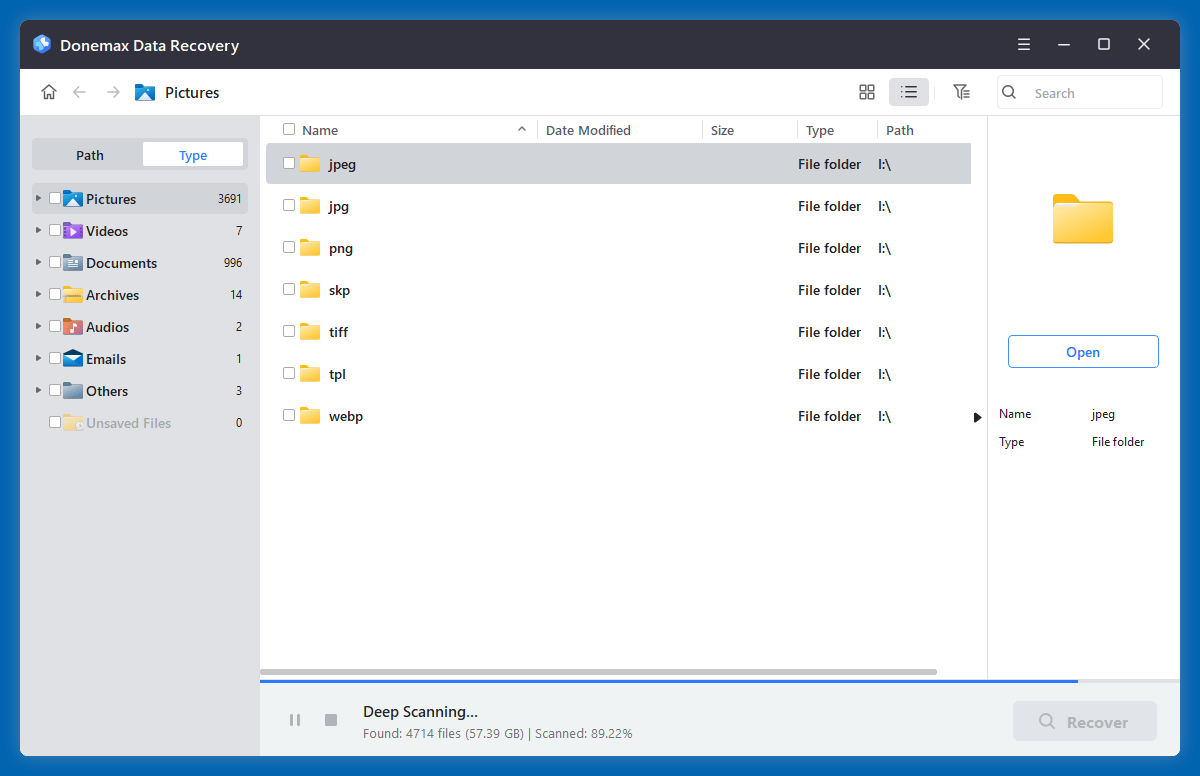Before we start: You can recover lost FL Studio via backups, recycle bin, autosave folder or data recovery software. Donemax Data Recovery is one of the best data recovery software. It supports to recover all types of lost FL Studio files including .flp, .zip, .wav, .mp3, etc. It not only recovers deleted FL Studio files, but it also can recover lost FL Studio files due to disk formatting, operating system reinstallation, software crash, etc.
PAGE CONTENT:
FL Studio is one of the most popular Digital Audio Workstations (DAWs) worldwide, used by music producers, sound designers, and audio engineers to create everything from demos to professional tracks. It offers a wide range of tools, plugins, and virtual instruments, enabling users to compose, arrange, mix, and master audio with ease.
However, losing FL Studio project files can be devastating. Countless hours of creative work can disappear in seconds due to accidental deletion, system crashes, or file corruption. Whether you're dealing with a missing .FLP file, corrupted project, or accidentally deleted samples, this guide will walk you through every possible method to recover your FL Studio files and prevent future loss.

Understand FL Studio File Types
Before diving into recovery methods, it's important to understand the key file types associated with FL Studio. Knowing what you're looking for increases your chances of successful recovery:
1. FLP Files (.FLP)
These are your primary project files, containing information about your arrangement, patterns, mixer settings, automation, and more. They do not contain audio samples unless you saved a zipped project.
2. Zipped Project Files (.ZIP)
ZIP files can bundle your .FLP project file along with all the associated samples, audio files, and other dependencies. This makes sharing or archiving complete projects easy.
3. Audio Samples and Stems (WAV, MP3, etc.)
Audio files used in your projects are often stored separately unless included in a zipped project. Missing samples can break your project playback.
4. Plugin Presets and Settings
Custom presets, synth patches, and plugin settings also contribute to your project but are stored separately from .FLP files.
Understanding these file types helps you identify which files you’ve lost and how to recover them effectively.
Common Reasons for FL Studio File Loss
File loss can happen to even the most careful producers. Here are the most frequent causes of missing FL Studio files:
- Accidental Deletion: Emptying the Recycle Bin or Trash without realizing project files were inside.
- Crashes & Software Errors: Unexpected FL Studio crashes before saving progress.
- Unsaved Projects: Forgetting to save projects or turning off autosave options.
- File Corruption: Power outages, storage errors, or improper shutdowns damaging .FLP files.
- Hard Drive Failure: Mechanical failure or logical errors on storage devices.
- Operating System Issues: System crashes, reinstallations, or formatting leading to file loss.
Regardless of the cause, it's crucial to act quickly to maximize the chances of successful file recovery.
Immediate Actions After Losing FL Studio Files
The moment you discover missing FL Studio files, follow these steps:
1. Stop Using the Affected Drive
If files were stored on a specific drive (e.g., external HDD, SSD, internal partition), stop writing new data to it immediately to avoid overwriting lost files.
2. Check the FL Studio Backup Folder
FL Studio automatically saves backup versions of your projects. The backup folder is often the first place to look.
3. Search the Recent Projects List
Open FL Studio and check the list under File > Recent Projects to see if your project still appears.
4. Locate Auto-Saved Versions
If autosave is enabled, you may find recent versions saved in the background.
If these quick checks don't yield results, deeper recovery methods are necessary.
4 Methods to Recover FL Studio Files
Method 1. Recover from the FL Studio Backup Folder or AutoSave
FL Studio creates automatic backup files at intervals defined in your settings. To access these:
For Windows:
Move to:
C:\Users\[YourUsername]\Documents\Image-Line\FL Studio\Projects\Backup
For macOS:
Look under: Macintosh
HD/Users/[YourUsername]/Documents/Image-Line/FL Studio/Projects/Backup
Sort the files by date and look for the most recent .FLP versions. You can open these directly in FL Studio to restore your work.
If you've never customized backup settings, consider increasing backup frequency under Options > File Settings > Backup to prevent future issues.

FL Studio's autosave feature creates project snapshots while you're working:
- Go to Options > General Settings
- Look for Autosave options
- Choose between:
- Rare (every 10 minutes)
- Regular (every 5 minutes)
- Frequent (every 1-2 minutes)
If your project crashed or FL Studio closed unexpectedly, autosaved versions can often be restored from the same Backup folder.
Method 2. Restore from Recycle Bin or Trash
If you've accidentally deleted .FLP, .ZIP, or other project files, they might still be in:
Check these locations immediately. Right-click the deleted file and choose Restore to return it to its original location.
Method 3. Use Data Recovery Software
If your FL Studio project files, such as .FLP, .ZIP, or associated audio files, have been permanently deleted or lost due to formatting, partition errors, or other severe issues, using reliable data recovery software can significantly increase your chances of recovery.
When to Use Data Recovery Software
- You emptied the Recycle Bin or Trash after deletion.
- The storage drive was accidentally formatted.
- Your hard drive, SSD, or external device experienced partition corruption.
- The files became invisible or inaccessible due to file system errors.
Important: Stop using the affected storage device immediately. Writing new files may overwrite the deleted FL Studio files, making them unrecoverable.
Recommended Tools:
- PhotoRec – Free with paid options, ideal for recent deletions.
- Donemax Data Recovery (Windows/Mac) – User-friendly interface, supports deep scanning.
- Magoshare Data Recovery – Robust solution for recovering files from formatted drives or accidental deletions.
| Tool Name | Supported OS | Pros | Cons |
|---|---|---|---|
| PhotoRec | Windows, Mac, Linux | Open-source, recovers various file types | Text-based interface may confuse beginners |
| Donemax Data Recovery | Windows, Mac | Supports deep scans, user-friendly interface | Limited free recovery (up to 200MB for Windows) |
| Magoshare Data Recovery | Windows, Mac | High recovery success rate, preview options | Full recovery requires paid version |
Recovery Steps (with Donemax Data Recovery):
Step 1. Download and install the Donemax data recovery tool (preferably on a different drive).
Step 2. Select the drive where FL Studio files were stored.

Step 3. Click on Scan button to deeply scan the drive and find all recoverable files including FL Studio files.

Step 4. Filter results by file type (.FLP, .ZIP, WAV, etc.). Preview recoverable files. Then select the wanted files and click on Recover button to restore the files to a safe location.

Important: Avoid saving recovered files to the same drive to prevent overwriting other lost data.
⭐ Pro Tips for Successful Recovery
- Recover multiple versions or backup files, if available, to ensure you have usable options.
- Combine recovery methods: Check FL Studio's Backup folder alongside recovery software results.
- Act fast - time and further system usage reduce recovery success rates.
❎ Limitations of Data Recovery Software
- Files overwritten by new data cannot be recovered.
- Severely corrupted drives may require professional data recovery services.
- Recovery success depends on factors like storage device health, how much time has passed, and system activity post-loss.
Method 4. Restore from External Backup or Cloud Storage
If you regularly back up projects to:
- External Hard Drives
- USB Drives
- Cloud Services (Google Drive, Dropbox, OneDrive)
You can easily retrieve lost files. Cloud platforms often provide file version history or a recycle bin to restore previous versions.
If you don't already back up your FL Studio projects, it's highly recommended to implement this practice going forward.
⭐ Recovering Corrupted or Damaged FL Studio Files
Sometimes, your .FLP project files exist but won't open properly due to corruption. Common signs include:
- FL Studio crashes when opening a project
- "Cannot open project" error messages
- Missing samples or plugins causing load failures
⭐ Recovery Tips:
- Open FL Studio in Safe Mode by holding Shift while launching a project. This disables plugins that might cause crashes.
- Extract resources from .ZIP projects if available. You can unzip the file and manually locate samples or settings.
- Check for alternate versions in the Backup folder.
- Contact Image-Line Support, especially if the project file is critical and corruption occurred within FL Studio itself.
Prevent Future FL Studio File Loss
After recovery, prevention should be a priority. Here are essential tips to safeguard your work:
1. Enable Frequent Auto Save
- Go to Options > General Settings > Autosave
- Choose Frequent or Regular to reduce the risk of unsaved work loss.
2. Save Incremental Versions
- Save your project as different versions (e.g., Song_V1.flp, Song_V2.flp)
- This protects earlier project stages from accidental changes or corruption.
3. Regular External and Cloud Backups
- Schedule backups to external hard drives or USB devices.
- Utilize cloud storage like Google Drive, Dropbox, or OneDrive for real-time backups.
- Some producers use dedicated cloud services for music projects to ensure secure storage.
4. Use Reliable Storage Devices
- Avoid working from unstable or failing drives.
- Replace storage devices showing early signs of failure (strange noises, slow access times).
5. Keep FL Studio and System Updated
- Updates often fix bugs that lead to crashes or instability.
- Always run the latest stable version of FL Studio.
Conclusion
Losing FL Studio files can be a frustrating and stressful experience, especially if hours of creative work vanish unexpectedly. The good news is that recovery is often possible - whether through FL Studio's built-in backups, autosave, or external recovery tools. Acting quickly significantly improves the chances of getting your project back.
Beyond recovery, building good file management habits is essential. Enabling frequent autosave, maintaining multiple project versions, and backing up your work regularly will ensure your music production stays safe, no matter what happens.
By following the steps outlined in this guide, you can recover lost FL Studio files and protect your future projects, allowing your creativity to flourish without fear of technical setbacks.


Donemax Data Recovery
One of the best data recovery programs to recover deleted, formatted or lost data from PC, Mac, HDD, SSD, USB drive, SD card, camera, RAID, Sever or other storage devices.
Related Articles
- Jun 21, 2025[3 Methods] Recover Deleted NRW File (Nikon RAW Images) Easily
- Jun 11, 20254 Solutions to Recover Deleted CAB Files | Restore Windows Cabinet Files
- May 27, 2025How to Recover Deleted or Lost AVI Videos?
- Oct 26, 2023How to Unformat Samsung Portable SSD T9?
- Aug 10, 2023Windows 10 File Recovery: Step-by-step Guide to Recover Lost Files in Windows 10
- Feb 07, 2025Recover Data from exFAT Drive (HDD, SSD, USB Drive, SD Card, etc.) on Windows/macOS

Maria
Maria is one of the senior writers & editors of Donemax who lives and works in Sydney, Australia. She loves PC, Mac and Internet Technology. She has 6 years of writing articles about data recovery on PC/Mac, disk cloning solution, data eraser and computer OS optimization, etc. She is also interested in testing various software and digital products.

Gerhard Chou
In order to effectively solve the problems for our customers, every article and troubleshooting solution published on our website has been strictly tested and practiced. Our editors love researching and using computers and testing software, and are willing to help computer users with their problems